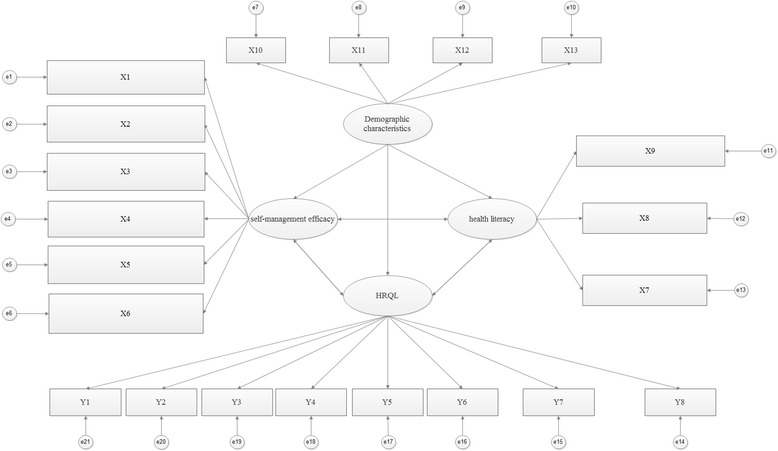Fig. 1.

Full model path analysis diagram. Y1: Pysical function (PF). Y2: General health (GH). Y3: Vitality (VT). Y4: Role limitations due to physical problems (RP). Y5: Role limitations due to emotional problems (RE). Y6: Social function (SF). Y7: Bodily pain (BP). Y8: Mental health (MH). X1: How confident are you that you can keep the fatigue caused by hypertension from interfering with the things you want to do? X2: How confident are you that you can keep the physical discomfort or pain of hypertension from interfering with the things you want to do? X3: How confident are you that you can keep the emotional distress caused by hypertension from interfering with the things you want to do? X4: How confident are you that you can keep any other symptoms or health problems you have from interfering with the things you want to do? X5: How confident are you that you can do the different tasks and activities needed to manage your health condition so as to reduce you need to see a doctor? X6: How confident are you that you can do things other than just taking medication to reduce how much you illness affects your everyday life? X7: How often do you have someone help you read hospital materials? X8: How confident are you filling out medical forms by yourself? X9: How often do you have problems learning about your medical condition because of difficulty understanding written information? X10: Age. X11: Education level. X12: Yearly family income. X13: Yearly family medical cost
